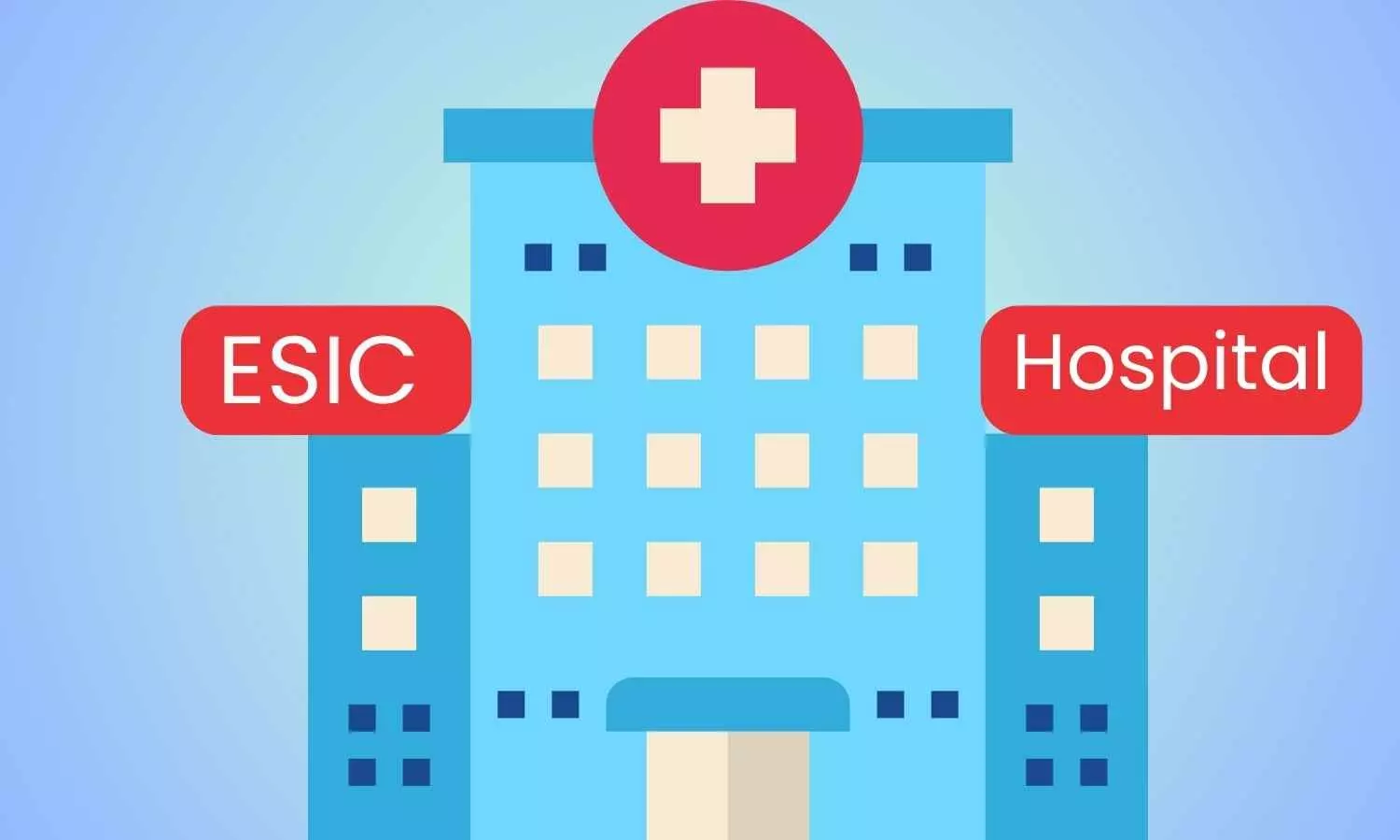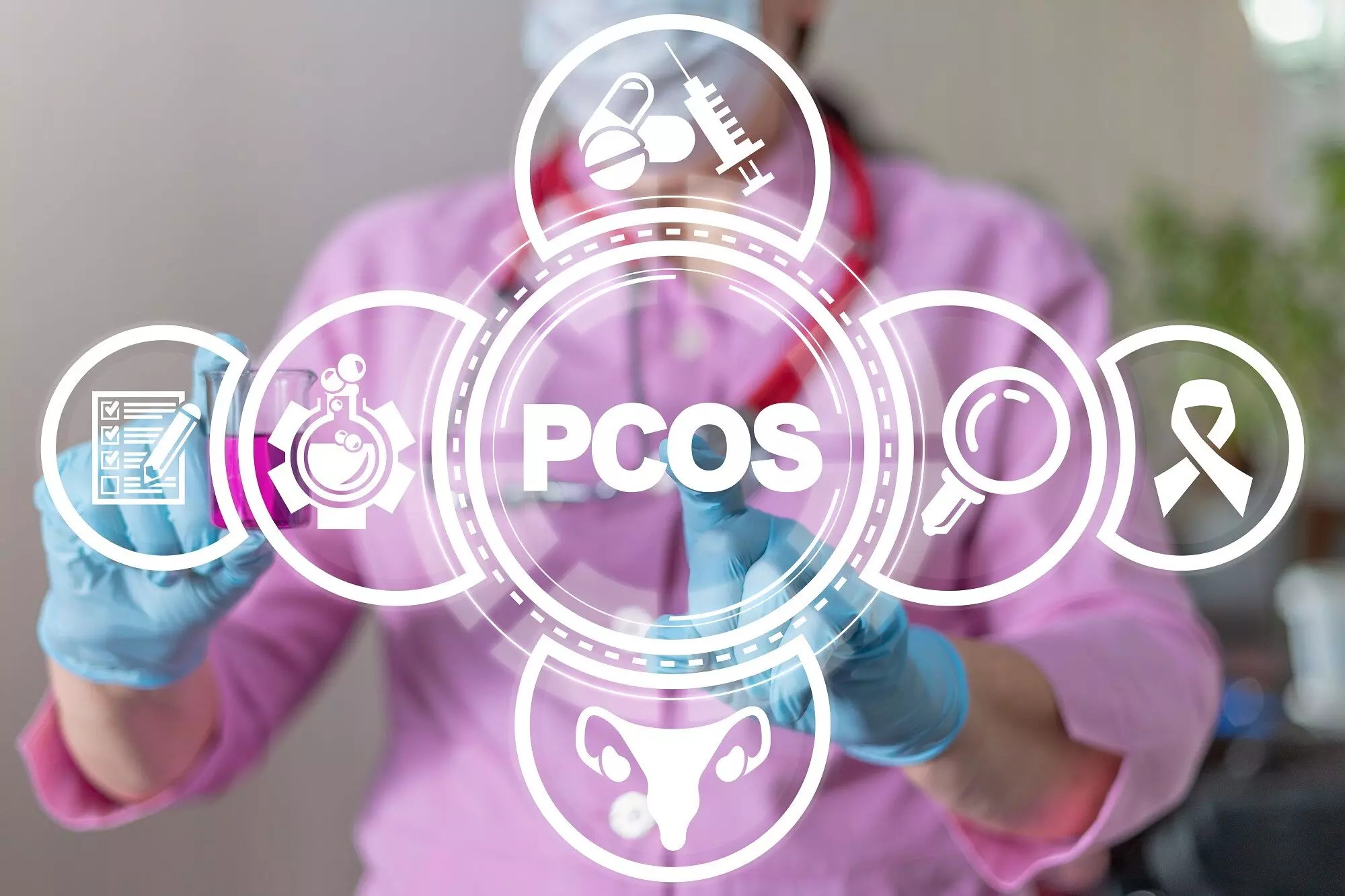Among new dads, 64% take less than two weeks of leave after baby is born
Powered by WPeMatico
Powered by WPeMatico

Ahmedabad: Zydus has announced that the company has received the Establishment Inspection Report (EIR) report from the US Food and Drugs Administration (US FDA) for the inspection conducted at its API manufacturing facility located
at Ankleshwar.
This facility underwent an inspection from 10th to 14th March 2025, and the
inspection has been classified as No Action Indicated (NAI). NAI means no objectionable conditions or practices were found during the inspection.
The USFDA has concluded that
this inspection is “closed”.
Read also: Zydus Lifesciences venture capital arm to acquire stake in Agenus for USD 16 million
Zydus Lifesciences Ltd. is an innovative, global lifesciences company that discovers, develops, manufactures, and markets a broad range of healthcare therapies. The group employs 27,000 people worldwide, including 1,400 scientists engaged in R & D. Over the last decade, Zydus has introduced several innovative, first-in-class products in the market for treating unmet healthcare needs with vaccines, therapeutics, biologicals and biosimilars.
Read also: Zydus Lifesciences to acquire India, Sri Lanka rights for Agenus cancer immunotherapy BOT/BAL
Powered by WPeMatico

Rourkela: Hundreds of insured workers staged a protest in front of the Employees’ State Insurance Corporation (ESIC) Model Hospital in Rourkela on Monday, raising several demands and voicing their grievances.
The protest was organised under the banner of the Sundargarh Industrial Mazdoor Union, affiliated with the Centre of Indian Trade Unions (CITU). The demonstrators called for the conversion of the current 50-bed model hospital into a dedicated Occupational Disease Centre and Public Health Unit. They also pressed for the establishment of a full-fledged ESIC Medical College and Hospital (MCH) in Rourkela to cater to the growing needs of the region’s industrial workforce.
Jehangir Ali, vice-president of CITU’s Odisha unit, criticised the deteriorating services at the model hospital, attributing the decline to the recent transfer of 10 experienced doctors, including several specialists and the medical superintendent, to the new ESIC hospital at Angul.
According to the news reports, the model hospital at Rourkela currently has only 16 doctors against the sanctioned strength of 28. Protesters demanded that the government take immediate action to fill all vacant doctor positions to ensure adequate healthcare services.
Also Read: Dr Mansukh Mandaviya to Inaugurate 220-bed ESIC Hospital in Ranchi
Speaking to TNIE, Ali further said the western Odisha region has around 12 lakh ESIC beneficiaries, including their dependents, who are mostly tribals. They face a higher risk of occupational health hazards and endure healthcare inequalities. A dedicated occupational disease centre would serve as a regional diagnostic, treatment, and research hub focusing on industrial illness.
Similarly, a public health unit would ensure outreach, preventive care, health education and early detection services. There is also a need for setting up of ESIC MCH at Rourkela in the larger health interest of the beneficiaries, he added, reports TNIE.
Also Read: ESIC Plans to Establish 10 New Medical Colleges Across India
Powered by WPeMatico

New Delhi: As India records more than 200 cases of the newly identified COVID-19 XFG variant, Dr Balram Bhargava, former Director General of the Indian Council for Medical Research (ICMR), emphasised that the emergence of the XFG variant is part of the ongoing evolution of SARS-CoV-2.
Dr Bhargava was part of the team at the forefront of managing the country’s response to the COVID-19 pandemic.
“The emergence of the XFG variant is part of the SARS-CoV-2 virus’s natural evolution,” he said.
His statement comes as India’s active COVID-19 cases crossed 7,000 as of June 11, with over 300 added in the last 24 hours and six deaths recorded in the same period, data from the Union Health Ministry shows, news agency PTI reported.
Also Read:163 cases of new COVID-19 variant XFG found in India, says INSACOG
According to the latest data from the Indian SARS-CoV-2 Genomics Consortium (INSACOG), 206 cases have been linked to XFG variant, with the highest count of 89 infections coming from Maharashtra, followed by West Bengal reporting 49.
Dr Bhargava said the XFG variant of SARS-CoV-2 (which causes COVID-19) carries mutations which may improve its ability of binding to human cells and bypassing immune defences.
“Early reports suggest that the variant has high immune escape potential, but there is no current evidence to indicate (an) increased severity (of disease),” he said.
Other states reporting infections due to the XFG variant are Kerala (15), Tamil Nadu (16), Gujarat (11), Madhya Pradesh (6), Andhra Pradesh (6), Odisha (4), Puducherry (3), Delhi (2), Rajasthan (2), and Punjab, Telangana and Haryana (one each).
However, similar to how the virus adapts, so has India’s diagnostic infrastructure since the first wave of the pandemic, and the RT-PCR test, or ‘reverse transcription-polymerase chain reaction’ — which detects the genetic material of SARS-CoV-2 in samples — remains its cornerstone, the cardiologist said.
He added that the widespread deployment of platforms such as Truenat — a rapid molecular diagnostic test that uses RT-PCR technology for diagnosis — puts India in a strong position to detect and contain emerging variants swiftly, even in remote and resource-limited settings.
Point-of-care testing, which detects antibodies in blood, played a crucial role during the pandemic then, and it continues to be a frontline tool for detecting emerging variants, such as XFG, Dr Bhargava said.
“Vigilance is critical now, and not panic. As we have done in the past, we should continue testing when symptomatic, masking in crowded spaces, and staying up to date with vaccinations”, he said.
India has seen 74 deaths in the current surge in COVID-19 cases, which started January this year. Kerala continues to be the most affected with over 2,200 cases, followed by Gujarat (1223) and Delhi (757).
Official sources have said that most cases are mild and can be managed under home care, even as all states have been instructed to ensure availability of oxygen, isolation beds, ventilators, and essential medicines, amidst rising cases of COVID-19, reports PTI.
INSACOG data also shows that 21 of the newly emerging cases are linked to the LF.7 variant — Maharashtra and Gujarat reporting the highest with six cases each — and two to the NB.1.8.1 variant — one each in Maharashtra and Tamil Nadu.
Also Read:Maharashtra reports 91 cases of new Covid subvariant FLiRT
Powered by WPeMatico

In a bid to make osteoporosis treatment affordable to Indian masses, Alkem Laboratories has slashed the price of its Teriparatide brand, Gemfrac.
Until now Teriparatide has been available in India at a monthly cost of therapy ranging from ₹7,000/- to ₹10,000/- limiting accessibility for many patients. Alkem has revised the rate of its Teriparatide brand. Gemfrac to make it available at ₹4,000/- per month, making osteoporosis treatment more affordable and accessible.
This reduction is expected to benefit a broader patient population, improving osteoporosis management in India.
Teriparatide, a recombinant fragment of human parathyroid hormone (N-terminal 34 amino acids), is a powerful osteoanabolic agent. Multiple clinical trials have confirmed its safety and effectiveness in treating osteoporosis.
Alkem Labs Management said, “At Alkem, we believe advanced healthcare should be accessible to all. With Gemfrac, India’s most affordable Teriparatide, we are redefining osteoporosis care by making this gold-standard treatment more affordable for millions. With over 61 million Indians affected by osteoporosis & 80% of which are women, access to effective treatment is crucial. By significantly reducing costs, we aim to improve treatment adherence and reduce fracture risks. This initiative reflects our unwavering commitment to affordable innovation and patient-first healthcare solutions”.
Powered by WPeMatico

Sarthebari: The 30-bed rural hospital in Sarthebari has reportedly been operating without a single doctor for the past three days, leaving the facility in a dangerously understaffed and nearly non-functional state.
Currently, only two support staff members, categorised as third- and fourth-grade employees, are present at the hospital. In the absence of both doctors and nursing staff, essential medical services are being handled solely by two medical assistants, raising serious concerns about patient safety and the quality of care being provided.
This deeply inadequate arrangement has not only jeopardised routine patient care but also left the hospital completely incapable of responding to medical emergencies, particularly at night.
Also Read: Tamil Nadu bans leave for Govt Doctors amid staff shortage
According to local residents, the absence of medical professionals, particularly during night hours, has become a recurring issue. They allege that under the current Medical Officer In-Charge, Chamsul Hoque, such operational lapses have become routine, reports India Today NE.
Adding to the crisis, the hospital also suffers from a lack of essential infrastructure. The situation in Sarthebari reflects the deeper, systemic issues plaguing rural healthcare across Assam—persistent understaffing, inadequate infrastructure, and weak administrative oversight.
Also Read: Margherita ASHA Workers Protest Doctors Transfer
Powered by WPeMatico

Chandigarh: To strengthen public healthcare services, the Punjab government on Tuesday signed a memorandum of understanding with Ludhiana’s Christian Medical College (CMC) to set up the state’s first Bone Marrow Transplant (BMT) facility in the public sector.
The aim is to launch a life-saving initiative for children suffering from thalassemia and find a permanent solution.
According to the PTI report, the MoU was signed in the presence of Health Minister, Dr Balbir Singh, who applauded the collaborative spirit of this initiative and reaffirmed the government’s commitment to making advanced healthcare accessible and affordable for all.
Also Read:AIIMS Mangalagiri to launch Bone Marrow Transplants
Under this programme, eligible patients, particularly children under 12 years, will be provided free HLA (Human Leukocyte Antigen) typing and subsidized allogeneic stem cell (bone marrow) transplantation, which is currently the only curative treatment for thalassemia. Once successfully treated, these children no longer require lifelong blood transfusions.
At present, no government medical college in Punjab has an operational BMT facility, forcing patients, especially those with thalassemia, blood cancers, and other hematologic disorders, to seek costly treatment outside the state, said an official statement.
This partnership with CMC Ludhiana, a leading institution with proven expertise in BMT, aims to bridge that gap and bring curative treatment within reach of economically weaker patients.
The BMT centre will provide critical treatment closer to home, especially benefiting patients from rural and underserved districts.
The local availability of follow-up care within the state system will ensure improved monitoring and outcomes.
Besides, the centre will also function as a training and skill development hub, strengthening the transplant ecosystem in Punjab and local access is expected to increase uptake and reduce dropouts, he said.
The health minister stated, “This is a historic step towards equitable healthcare in Punjab. Through this partnership, we are not just building a facility, we are giving new hope to hundreds of families battling life-threatening diseases.” The facility is expected to become operational in the near future, with robust coordination between the Department of Health, CMC Ludhiana, and other stakeholders to ensure transparent, need-based patient care, reports PTI.
Also Read:Punjab to appoint Facility Managers in District Hospitals for imporoved management
Powered by WPeMatico

USA: A recent analysis from the ongoing Coronary Artery Risk Development in Young Adults (CARDIA) study has revealed that consuming higher amounts of diet beverages and saccharin may significantly raise the risk of developing diabetes. The findings were presented at NUTRITION 2025, the annual meeting of the American Society for Nutrition, by Hejingzi Jia and colleagues from the University of Minnesota.
The study aimed to explore the long-term metabolic implications of artificial sweeteners (ArtSw), especially in light of their widespread use as sugar substitutes. Although these sweeteners are marketed as healthier alternatives, emerging data suggest they may have unintended health consequences.
The analysis included 4,654 adults who were on average 24.9 years old at the outset of the study in 1985–86. Participants were racially diverse (50.1% White) and included more women than men (54.4%). Researchers gathered dietary data at baseline (year 0), year 7, and year 20 to calculate cumulative average intakes of artificial sweeteners, including diet drinks, aspartame, sucralose, and saccharin.
Over a median follow-up period of three decades, 691 participants developed diabetes. Diabetes diagnoses were based on fasting blood glucose levels, oral glucose tolerance test (OGTT) results, hemoglobin A1C thresholds, or use of diabetes medications.
The study employed time-dependent multivariable Cox regression models to assess risk. These models were carefully adjusted for several factors that might influence diabetes risk, such as age, sex, race, education, energy intake, physical activity, smoking habits, alcohol use, diet quality, and family history of diabetes.
Based on the study, the researchers reported the following:
Commenting on the research, co-author Dr. Lyn Steffen, Professor of Epidemiology and Community Health at the University of Minnesota, noted that further investigations—including mediation analyses—are underway to better understand these links.
The authors emphasized that these findings underscore the importance of evaluating the long-term effects of artificial sweeteners on glucose metabolism. Previous analyses from the CARDIA study had already suggested a relationship between long-term sweetener use and increased visceral and subcutaneous fat levels.
With artificial sweeteners deeply embedded in many people’s diets, these findings bring renewed attention to their potential health risks, especially over extended periods.
Powered by WPeMatico

A new study published in the Journal of Clinical Endocrinology and Metabolism showed that men who have sisters with polycystic ovarian syndrome (PCOS) are more likely to develop diabetes, high blood pressure, and obesity.
Anovulation, or irregular ovulation, hyperandrogenemia, and/or polycystic ovaries are some of the signs of PCOS, a prevalent endocrine condition that affects 11% to 13% of women globally. PCOS is linked to a number of coexisting cardiometabolic disorders, such as type 2 diabetes, insulin resistance, and cardiovascular disease risk factors including hypertension. There is a male phenotype of PCOS, and previous research has shown hormonal and metabolic abnormalities in both male and female siblings of women with PCOS.
This further supports the idea that PCOS is a metabolic and reproductive condition. In particular, metabolic syndrome, obesity, dyslipidemia, insulin resistance, and epithelial dysfunction were found to be more common in brothers of women with PCOS in earlier research. Brothers of women with polycystic ovarian syndrome are at risk for cardiometabolic dysfunction, according to smaller clinical trials. Therefore, this study was set to examine the risk of poor cardiometabolic outcomes in males who had a sister with PCOS.
Men with at least one sister who were born in Sweden between 1973 and 2013 were tracked from the age of 5 until December 31, 2018 (n = 1,098,203), and possible PCOS diagnoses in the sisters were found. Cox regression was used to assess the risk of receiving a clinical diagnosis of hypertension, type 2 diabetes, or obesity.
In a subgroup, logistic regression was used to determine the relationship between blood pressure measurements taken at ages 18 to 20 and body mass index categories. Parental education and birth year were taken into account in the analyses. When compared to males with unaffected sisters, men who had a sister with PCOS were more likely to be obese, have type 2 diabetes, and have high blood pressure.
Having a sibling with PCOS (n = 2970) was linked to being overweight and obese but not having high blood pressure in the subcohort assessed at ages 18 to 20 (n = 147 802).
Overall, men who have sisters with PCOS are more likely to experience negative cardiometabolic disorders starting in their early adult years. These findings advance our understanding of how PCOS affects families and identify a patient population that might profit from focused early screening to avoid and lessen the long-term health effects of cardiometabolic disorders.
Reference:
Kanina, A., Stener-Victorin, E., Butwicka, A., Öberg, A. S., Rosenqvist, M. A., & Cesta, C. E. (2025). Adverse cardiometabolic outcomes in men with sisters with polycystic ovary syndrome. The Journal of Clinical Endocrinology and Metabolism. https://doi.org/10.1210/clinem/dgaf121
Powered by WPeMatico

A new study published in the European Heart Journal showed that patients with myocardial infarction (MI) and preserved left ventricular ejection fraction (LVEF) who discontinue beta-blocker therapy experience notable increases in heart rate and blood pressure. This physiological response is associated with a heightened risk of adverse outcomes, especially in individuals with pre-existing hypertension.
In the coronary artery disease patients, β-blockers regulate blood pressure (BP) and heart rate (HR), which may be prognostic variables. However, the use of β-blockers to treat hypertension is becoming more and more controversial, and their antihypertensive effects are less important than their cardiovascular preventive properties.
And so, Niki Procopi and colleagues carried out this investigation to document the impact of stopping β-blocker treatment on blood pressure and heart rate in the AβYSS experiment, in which patients were randomly assigned to either stopping or continuing β-blocker therapy following a myocardial infarction.
The AβYSS study included 3698 participants with a median follow-up of 3.0 years. Changes in HR and BP from baseline to post-randomization are reported using a linear mixed repeated model. Additionally, the linear mixed repeated and adjusted Cox proportional hazards models were used to evaluate changes in HR and BP as well as the impact on the primary endpoint (death, MI, stroke, and hospitalization for cardiovascular reasons) in the pre-specified subgroups of patients with or without a history of hypertension.
Despite an increase in antihypertensive medications in the β-blocker interruption group, β-blocker interruption was linked to a significant increase in systolic blood pressure [+3.7 (2.6, 4.8) mmHg, P <.001], diastolic blood pressure [+3.3 (2.6, 4.0) mmHg, P <.001], and resting heart rate [+10 [9, 11) b.p.m., P <.001] at 6 months.
These changes continued throughout the follow-up period. Both hypertension patients (43% of the population) and non-hypertensive individuals experienced the effects. When compared to individuals without hypertension, those with hypertension had a greater risk of events (25.8% vs. 19.2%) (adjusted hazard ratio 1.18, 95% CI 1.01–1.36, P =.03).
When randomized to β-blocker interruption, patients with hypertension saw a notably significant rise in the main outcome (risk difference 5.02%, 0.72%–9.32%, P =.014). Overall, the AβYSS study results may be partially explained by this loss of BP and HR control after β-blocker cessation, which also exposes patients to potentially harmful long-term consequences on outcomes, particularly in those with a history of hypertension.
Source:
Procopi, N., Zeitouni, M., Kerneis, M., Cayla, G., Ferrari, E., Range, G., Puymirat, E., Delarche, N., Guedeney, P., Beygui, F., Desprets, L., Georges, J.-L., Bochaton, T., Schiele, F., Ducrocq, G., Hauguel-Moreau, M., Dumaine, R., Slama, M. S., Payot, L., … Montalescot, G. (2025). Beta-blocker interruption effects on blood pressure and heart rate after myocardial infarction: the AβYSS trial. European Heart Journal. https://doi.org/10.1093/eurheartj/ehaf170
Powered by WPeMatico
